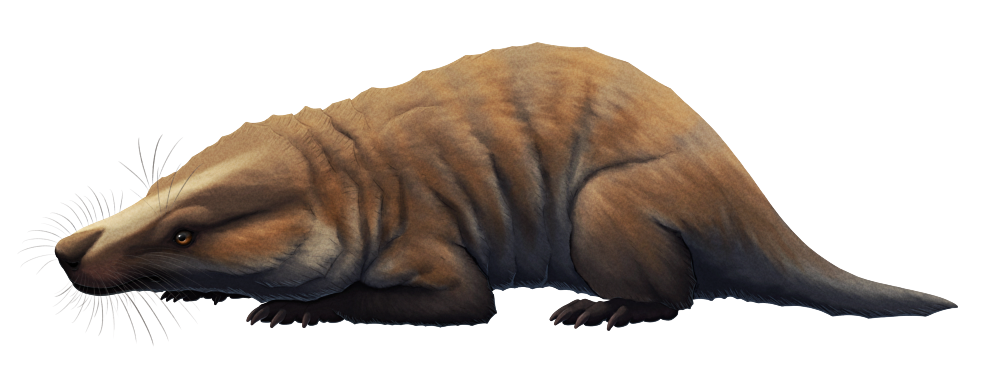The synapsids were an incredibly successful and diverse group during the Permian period, but after the devastating “Great Dying” mass extinction event 252 million years ago only three lineages survived into the Triassic – the cynodonts (close relatives and ancestors of modern mammals), the dicynodonts (beaked tusked weirdos who briefly took over the world), and the therocephalians.
Therocephalians were close relatives of cynodonts, and convergently evolved several very mammal-like anatomical features in their skulls, teeth, and limbs. But unlike their cousins this lineage never fully recovered in the Triassic, and they ultimately disappeared completely around 242 million years ago.
Ericiolacerta parva was one of these short-lived Mesozoic therocephalians, known from the early Triassic (~252-247 million years ago) of South Africa and Antarctica, in regions that were connected at the time as part of the supercontinent of Pangaea. It was a fairly small animal, about 20cm long (~8″), with small sharp teeth that indicate it mainly fed on insects, and semi-opposable thumbs and inner toes that suggest it was also a capable climber.
Holes in the bones of its snout would have carried numerous nerves and blood vessels, which may be evidence of sensitive fleshy lips and possibly whiskers. And while there’s no direct evidence of fur in therocephalians, they do appear to have been active warm-blooded animals – and possible fossilized synapsid hair from the Permian period suggests fuzziness might have been ancestral to all of the “protomammal” lineages that survived into the Triassic.

